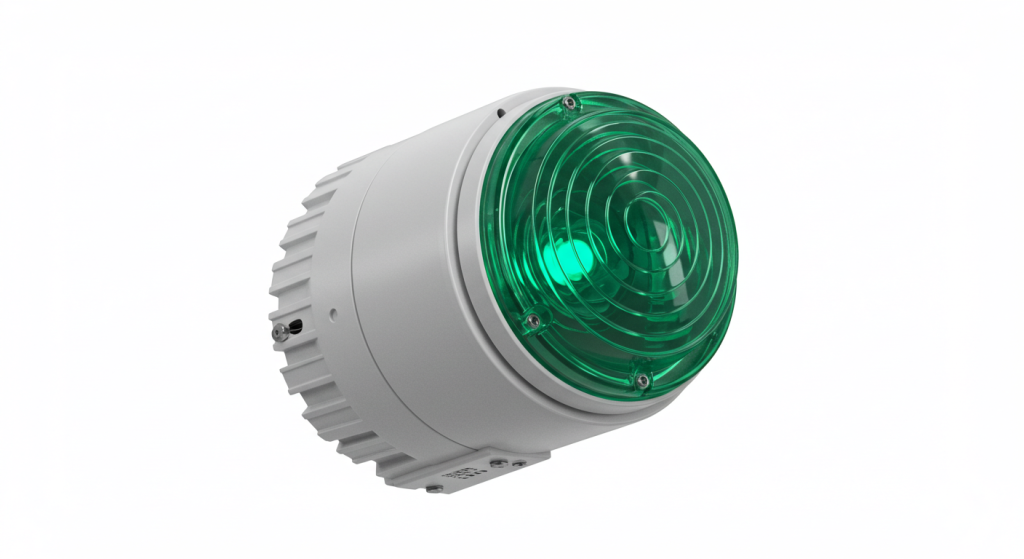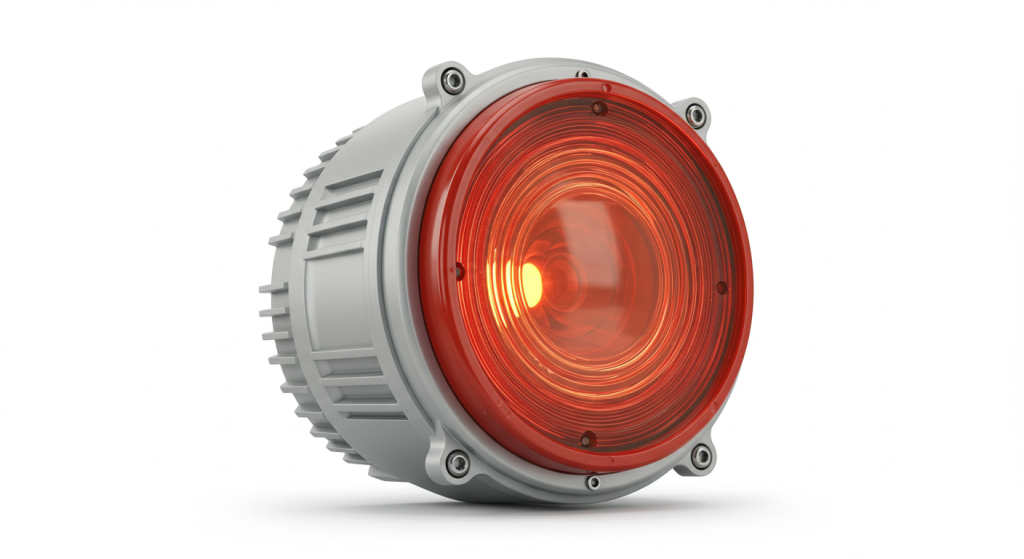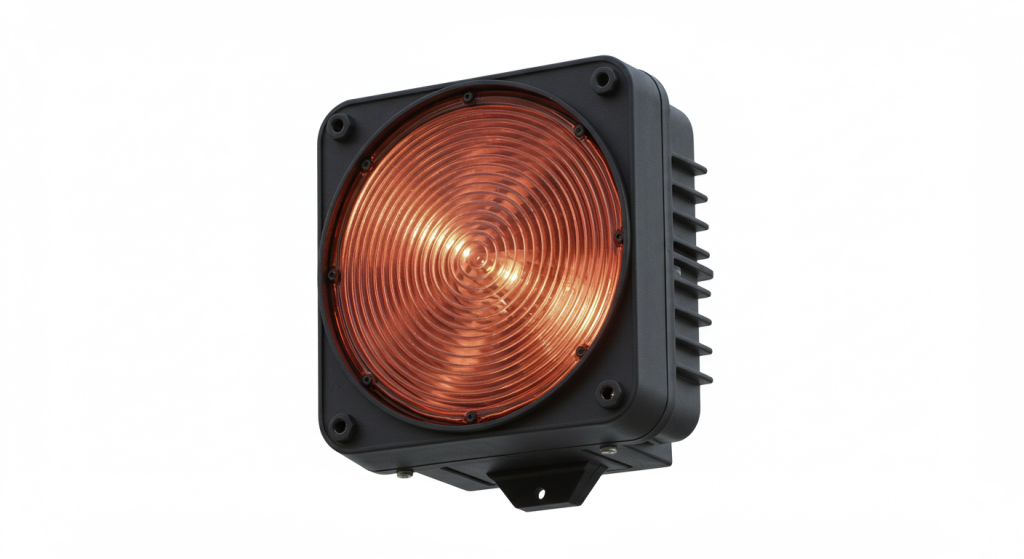Illuminating the Heights: A Comprehensive Guide to Purchasing Tower Strobe Lights
Ensuring visibility is paramount in various applications, from construction sites to aviation hazards. Tower strobe lights play a crucial role in these settings. The key question when selecting lighting is, “How to purchase tower strobe light?” The process involves understanding your specific needs, as well as being aware of local and international guidelines for light use, the environment, and the type of structure. Additionally, you must evaluate the durability of the light, the intensity of the beam, and the flash rate that the light provides. It is also important to keep in mind the advantages of systems such as [Solar Powered Obstruction Lights], which can reduce running costs and increase sustainability. Evaluating all the technical specifications against the operational demands ensures the selection of the optimal lighting solutions.

Understanding Tower Strobe Lights
Tower strobe lights are high-intensity lighting devices designed to produce short, powerful bursts of light. They serve as highly visible warning signals, making structures and obstacles stand out in a variety of environmental conditions. They can be crucial in preventing accidents or collisions, or any other type of hazard, whether during the day or night. These lights are most often associated with tall objects, such as towers, buildings, and industrial equipment. Tower strobe lights work by using high-voltage electrical discharge through a gas-filled tube. This produces an intense pulse of light. The short duration of these flashes, coupled with their high intensity, makes them highly noticeable.
Applications of Tower Strobe Lights
Strobe lights have a variety of uses. Some of the most common applications are:
- Aviation Obstruction: Marking tall structures like towers, wind turbines, and skyscrapers to prevent aircraft collisions.
- Construction Sites: Warning workers of hazards, or heavy equipment operations.
- Emergency Services: Used in emergency vehicles and for signaling at accident scenes.
- Industrial Settings: Marking potentially dangerous areas in factories or other industrial sites.
- Telecommunications: Marking cell towers and radio masts.
- Marine Environments: Used to highlight navigation hazards like buoys and channel markers.
The use of strobe lights depends on the local codes. The type of flash pattern must also meet established standards for visual aids.

Why Are Strobe Lights Illegal?
While strobe lights are highly effective for warning and signaling, their use is subject to stringent regulations, and in certain contexts, they are restricted or even deemed illegal. The reasons why strobe lights might be considered illegal stem from their potential to cause problems and interfere with various activities. The main reasons for regulations are:
- Photosensitive Epilepsy: The flashing rate of strobe lights can trigger seizures in individuals with photosensitive epilepsy, presenting a serious health risk. This is the main reason for restrictions.
- Disorientation and Distraction: Strobe lights can cause disorientation and distraction, particularly when used in environments where focused attention is required such as around traffic or during an emergency response.
- Visual Interference: Strobe lights may interfere with other visual signals, like aviation lights or traffic signals, which makes these signals less clear to the intended recipients.
- Annoyance and Light Pollution: Intense flashing lights can be disturbing and cause nuisance, especially in residential areas, contributing to light pollution.
- Misuse: Strobe lights can be misused for entertainment or promotional purposes in locations not intended, causing confusion and safety concerns.
Regulatory Restrictions
- Aviation Regulations: Aviation authorities restrict use of strobe lights at airports to maintain visibility and not interfere with plane operations. They can be used to indicate the presence of a tower, but not in a way that could be mistaken for an aircraft.
- Roadway Regulations: Regulations prohibit strobe lights on vehicles except for authorized emergency vehicles to prevent the distractions that can cause accidents.
- Occupational Safety: Regulations may limit the use of strobe lights in workplaces due to potential health hazards and distractions.
- Local Ordinances: Local municipalities may enact their own regulations to restrict the use of strobe lights based on the circumstances and location.
The legal status of strobe lights varies from region to region. Adherence to local regulations is important for the safety of all involved. It’s always best to check all local and international standards before implementing strobe lights in any application.

What Should I Look for in a Strobe Light?
Selecting the right strobe light involves a detailed evaluation of various factors to ensure that it meets the specific demands of the intended application. Here are the key characteristics that should be assessed when choosing a strobe light:
Key Considerations When Purchasing
- Light Intensity: Choose a light that produces a sufficient light output, measured in candelas, to be visible from the required distance.
- Flash Rate: The number of flashes per minute must adhere to the standards for the type of structure and location. This can also be a crucial factor for visual recognition.
- Color: The color of the light, whether white, red, amber, or blue, should be appropriate for its intended use. Regulations and intended visibility should dictate the color used.
- Duty Cycle: Select a strobe light capable of operating for the required period, with consideration of intermittent or continuous use.
- Durability: The light should be robust and able to withstand environmental conditions like rain, temperature fluctuations, and wind.
- Power Consumption: Consider the power requirements and the possibility of using energy-efficient LED options. This can help with managing running costs.
Specific Features to Evaluate
- Housing Material: The material of the housing should be strong and resistant to impact and weather conditions.
- Lens Protection: A durable lens that will protect the light source and maintain visibility over the long term.
- Mounting Options: The type of mounting setup should align with the structure where the light will be installed.
- Wiring and Connections: Make sure the wiring is secure and the installation will be easy.
- Certifications: Select lights that comply with the standards set by governing bodies, such as the FAA or ICAO.
- Lifespan: The lifespan of the light is essential, especially for systems that need to be left to operate without maintenance.
Testing and Validation
- Pre-Purchase Testing: Testing the light in a location that simulates the real environment can reduce the chances of problems after installation.
- User Reviews: Look for feedback about the light from other users to get a better understanding of what to expect.
- Supplier Reliability: A supplier that has a good reputation for customer service and product support should be your choice.
Selecting the right strobe light requires balancing cost, performance, and reliability. Careful consideration of the above factors will ensure the light is an effective solution for the intended purpose and will keep the structures that use them safe.
What Are Tower Lights Called?
Tower lights, also known as obstruction lights, are lighting systems designed to increase the visibility of tall structures, ensuring aircraft and other forms of traffic can safely navigate around them. These lights go by various names, often depending on the context and specific type of lighting involved. These lights serve as a warning system, so that they can be visible for long distances and in low visibility conditions. Knowing the various names of the lighting systems can help in communications and prevent misinterpretation of standards. Here are some of the most common terms:
Common Names for Tower Lights
- Obstruction Lights: This is a general term used in the aviation industry for any lights used to mark tall structures.
- Aviation Obstruction Lights: Used specifically in the aviation sector. These meet the standards established by the FAA and the ICAO.
- Hazard Lights: This general term applies to any lights designed to mark potential hazards. They are often used on construction sites and other industrial locations.
- Warning Lights: A basic way to describe any lights that issue warnings. It can be used in a variety of contexts and applications.
- Beacon Lights: While also used in aviation, this refers more to the type of light rather than the specific structure.
- Tower Strobe Lights: This term is used specifically when the lights are high-intensity and produce short bursts of light.
Specific Terms Used in Aviation
- Low-Intensity Obstruction Lights: Lights for structures under 150 feet, typically red, with a steady or low flashing rate.
- Medium-Intensity Obstruction Lights: Used on structures between 150 and 500 feet, white or red with a medium flash rate.
- High-Intensity Obstruction Lights: Usually used on structures over 500 feet, very bright white light, used for both day and night.
- Dual Obstruction Lighting: A system that combines both red and white lights, typically switching between the two according to ambient light.
Industry Specific Terms
- Machine Tower Lights: Typically used in industrial applications, these lights help workers monitor equipment and processes.
- Light Towers: Refers to mobile lighting systems used on construction sites or for temporary events.
The term “tower lights” is used commonly, the specific terminology can vary according to the application. Understanding these various names is key for selecting and installing the correct lighting for any situation. Each term is descriptive for the type of system being used. This can prevent any confusion between safety professionals. The standardization of the names for each lighting system is necessary for both compliance and safety.
What are Strobe Lights Called?
Strobe lights, characterized by their high-intensity, short-duration flashes of light, go by several names depending on the application and context. While “strobe light” is the most commonly used term, there are alternative names used in various industries and situations. These names can often indicate the specific use or technical aspects of the device. Understanding these terms will help you better understand the various functions these lights provide. Strobe lights are a popular choice for warning and signaling due to their highly visible nature. The following are the different ways they are commonly referred to:
Common Terms for Strobe Lights
- Strobe Light: This is the most common term, used to refer to any light that produces short flashes at a high intensity.
- Flash Light: This is often used interchangeably with strobe light, but it can also describe a light that produces any flash of light, including handheld lights.
- Warning Light: Used generically for lights that issue a warning.
- Emergency Light: When used in emergencies, like with police and fire vehicles, it is often called an emergency light.
- Signal Light: This term is used when the light serves as a signal.
Technical and Industry-Specific Terms
- Xenon Strobe: This refers to strobe lights that use xenon gas to produce the flash of light.
- Strobe Beacon: A beacon that uses strobe technology for a more visible signal.
- High-Intensity Discharge (HID) Strobe: Uses a type of lighting known for a high light output.
- LED Strobe: The current technology most commonly used because of the efficiency of LED technology.
Application-Specific Terms
- Aviation Strobe: Used to mark aircraft or hazards near airports.
- Construction Strobe: Used on construction sites to highlight hazardous areas or equipment.
- Vehicle Strobe: Used on emergency vehicles, construction vehicles, or snowplows for increased visibility.
- Tower Strobe: This term is used for strobe lights mounted on tall structures such as towers.
The term “strobe light” is a widely accepted term, these lights serve a wide variety of purposes and can be used in a number of diverse contexts. Knowing the specific names of each system can help in more clear and specific communication in all industries that use strobe lighting.
Tower Strobe Lights Price
The cost of tower strobe lights can vary greatly depending on several factors including the type of light, intensity, the manufacturer, and extra features. Understanding the pricing is necessary for choosing the right system for your budget and safety needs. The price point is not the only important thing, it is just as important to maintain safety standards. Here’s a comprehensive guide to help understand the cost dynamics of tower strobe lights:
Factors Affecting the Price
- Light Intensity: Higher intensity lights are often more expensive because of higher performing technology and power sources.
- Technology: LED lights are generally more costly than older technologies but they can be more efficient and may be more cost effective in the long run.
- Brand and Quality: Reputable brands that use high-grade components often command a higher price than those with generic or budget systems.
- Durability: Lights designed for extreme environments and high levels of use are often more expensive.
- Special Features: Features such as remote monitoring, adjustable flash rates, or weather-proofing will add to the overall cost.
- Certifications: Certified equipment may cost more but these lights have been tested and meet the standards for their application.
- Solar Options: [LED Obstruction Lighting] can reduce the cost of operation over the long term, but they may be more expensive upfront.
Price Ranges
Here are some rough estimates of the costs for tower strobe lights:
| Type of Strobe Light | Estimated Price Range (USD) | Description |
|---|---|---|
| Basic LED Strobe Light | $200 – $500 per unit | Basic use, suitable for smaller structures and less demanding applications |
| Medium-Intensity LED Strobe Light | $500 – $1,500 per unit | Suitable for medium height structures such as communication towers |
| High-Intensity LED Strobe Light | $1,500 – $5,000+ per unit | Designed for tall structures, high light output for high visibility |
| Solar Powered Strobe Light | $800 – $3,000+ per unit | Includes solar panels, batteries, and controllers, ideal for off-grid locations |
Additional Costs
- Installation: The cost of installation will depend on the location and any modifications necessary for wiring.
- Maintenance: Maintenance costs must be considered, since parts will need to be replaced from time to time.
- Permits and Approvals: The costs for the required legal permits should also be considered.
Tips to Get the Best Value
- Compare Prices: Get quotes from multiple suppliers.
- Consider LED Options: LEDs are more efficient in the long run, even if they cost more up-front.
- Plan Ahead: Advance planning allows for more cost comparison options.
- Look for Certifications: Choose equipment that meets the standards required for the application.
- Prioritize Quality: Choose high-quality lights to avoid issues with maintenance and reliability.
The purchase of tower strobe lights should be approached as a long-term investment into safety. Quality components will help ensure the system operates as intended. Keeping within the established regulations for visibility is also important for a safe environment.
In conclusion, navigating the process of “**How to purchase tower strobe light**” requires a clear understanding of the various options and requirements. From integrating eco-friendly [Solar Powered Obstruction Lights] to selecting the most appropriate [LED Obstruction Lighting] solutions, these choices are vital for safety and operational efficiency. By carefully evaluating the intensity, flash rate, durability, cost, and regulatory compliance, organizations and individuals can acquire a dependable and effective lighting system for their specific needs. Considering factors such as lifespan, ease of installation, and the environmental conditions of the site, purchasing a high-quality system will be a valuable long term investment for safety and visibility.